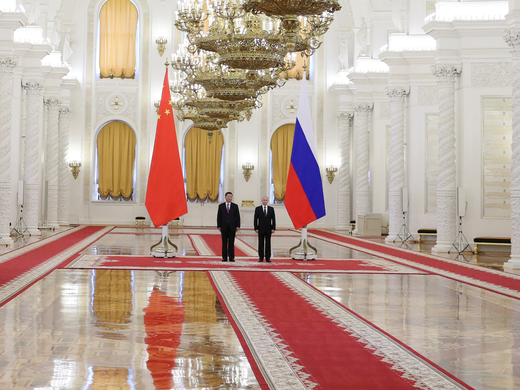In April 2022, during a budget hearing, the Department of Homeland Security (DHS) in the United States publicly announced the first Disinformation Governance Board. Criticism blew up: Fox News and right-wing outlets targeted the executive director, Nina Jankowicz, while progressives worried about the board’s unclear mandate and location in DHS. Within three weeks, Jankowicz had resigned and the board was disbanded.
The tale of the failed Disinformation Governance Board contains many salutary lessons: don’t create something vaguely defined; don’t locate it in a department such as Homeland Security; very clearly spell out the role and limitations; use a different name. Journalist Charlie Warzel soon wrote a useful take on how the board had become embroiled in now-classic patterns of internet outrage. After the intense (and often troublingly misplaced) focus in the United States on that episode, it’s important to think very carefully about the nomenclature of disinformation and its relevance as a field of study.
Even before this debacle, researchers were debating how far the concept of disinformation can illuminate issues online. Earlier this summer, I attended a day-long workshop at the International Communication Association entitled “What Comes after Disinformation Studies?” Dozens of researchers considered whether the disinformation frame still makes sense, or could cause more problems than it solves.
I used the opportunity to consider how history can contribute to new approaches. Obviously, history is already in play when we think and write about disinformation. Thomas Rid has traced how the United States and the Soviet Union engaged in many types of “active measures” to spread disinformation throughout the twentieth century, ranging from funding magazines to spreading rumours. Rid’s state-based perspective illuminates the relative unimportance of specific technologies in influencing information provision.
In the US context, Alice Marwick, Rachel Kuo, Shanice Cameron and Moira Weigel developed a critical disinformation studies syllabus with historical case studies on subjects ranging from Japanese incarceration to AIDS/HIV, to demonstrate the long-standing prevalence of disinformation in different forms within American society. The four argue that:
Many of the stories that pundits, journalists, and scholars tell about disinformation begin with the 2016 US presidential election and focus on the role of social media platforms in spreading and generating false content. At their worst, these narratives imply that in the past, everyone shared the same sense of what was true and what was false; that this collective understanding was reinforced by legacy media like newspapers and TV news; and that “fake news,” disinformation, and inauthentic online behavior are responsible for a global far-right shift to populism exemplified by Brexit and the Trump presidency. None of these assumptions hold up to scrutiny.
The four researchers note that these narratives ignore many instances when political and media elites faked and distorted in the past, with examples that include perpetuating the myth of the “welfare queen” to depicting the Central Park Five (five Black and Latino teenagers falsely accused of raping a white woman in 1989) as guilty.
And I myself wrote last year about how historical analogies do and don’t help us to understand disinformation. I suggested then that history can help us unearth alternatives to current understandings of news.
In the interim, it has become even clearer that historical work should not just consider alternatives but also understand why they failed. I’ll be embarking on one example of this work in the next few years with a team led by Dr. Maurice Jr. Labelle at the University of Saskatchewan.
We will explore the Non-Aligned News Agency Pool (NANAP), founded in 1974 to make world news more representative of Global South perspectives. Spearheaded by Yugoslavia, NANAP was designed to create cooperation between news agencies from non-aligned countries such as Tunisia. By the early 1990s, however, these efforts had fallen apart. We still know remarkably little about this first major attempt by the Global South to coordinate news across borders. Our team will uncover and digitize archival sources about NANAP. We will try to understand why it was created, how it operated and why it failed.
NANAP emerged from a longer-term frustration about the power structures of news. Even after the Second World War, the US- and UK-based news agencies Reuters and Associated Press continued to dominate domestic and international news supply, along with Agence France-Presse (AFP). Researcher Edward Epstein found that more than 70 percent of domestic news stories at NBC in the United States in December 1968 came from the two major news agencies (the Associated Press and United Press International). A national editor from another major TV channel, ABC, said in 1973 that: “Without the wire services, we’d be dead.” Television may have been a comparatively new technological medium, but the same news agencies that had existed for decades still set the agenda.
Internationally, Western news agencies remained dominant too. Ironically, decolonization in Africa actually enabled Reuters to extend its reach and gain many former French colonies as clients. It was no surprise that many anti-colonial disputes about news centred around news agencies, because “Third World” activists identified news agencies as the central node of news distribution. To change news networks, they believed they had to challenge news agencies.
The challenge from NANAP built on several decades of research and activism. In 1953, the United Nations Educational, Scientific and Cultural Organization (UNESCO) had published a study on news agencies that highlighted problems of market dominance by Western companies, including chronic under-reporting on many parts of the world beyond North America and Europe. UNESCO tried to counter this dominance by fostering national news agencies (particularly in Africa in the 1960s) and by providing aid to develop alternative news infrastructures. Many Latin American journalists and leaders had also become concerned about the dominance of American-generated news in their region; some gathered in Mexico City throughout the 1970s, after being exiled from their own countries, such as Argentina or Brazil, which had taken a sharp right-wing turn or become a military dictatorship. They discussed how a “New International Information Order” could bolster Third World solidarity. NANAP was part of these efforts.
Concerns about cultural imperialism and Third World dependency on Western news became major aspects of debates on news. In 1980, the MacBride Report, Many Voices, One World, commissioned by UNESCO, condemned the “harmful disparities both between countries and within them.” It criticized the commercialization of mass media and advocated for greater support for national news organizations. The United States and the United Kingdom reacted angrily to the report’s implications of media imperialism. They withdrew from UNESCO in 1984 and 1985 in protest at what they saw as the increasing politicization of the organization, only rejoining in 2003 and 1997, respectively (the United States withdrew again in 2018). The reduced funding sucked the oxygen out of UNESCO’s efforts, as did the failure of NANAP.
Researching efforts such as NANAP can illuminate how and why news and its norms remain globally contested. Norms like the idea of “objectivity” in news sought to portray journalism as observing society from the outside. Yet, the very idea that “objective” observation was possible relied upon a certain perspective. Media sociologist Herbert Gans pointed out in 1979 that “news is a form of knowledge as well, and what journalists (like sociologists) know is also perspectival.” Only certain types of people contributed to developing that perspective, particularly middle- and upper-class white men in Europe and North America.
For many countries in Latin America and newly decolonized nations in Africa, the continued global dominance of Western news distorted reporting. Although they did not use the term disinformation, they certainly believed that Anglo-American dominance harmed Third World and Global South interests.
One approach to moving beyond disinformation studies is to excavate institutional attempts to challenge Anglo-American understandings of news — and to understand why those attempts failed. This moves away from now-established approaches in disinformation studies and moves toward more systemic analysis of power and more global perspectives. Platform governance may be a comparatively new domain; the power structures enabling platforms’ rise are not. To address how platforms contribute to global disinformation means confronting that past.



